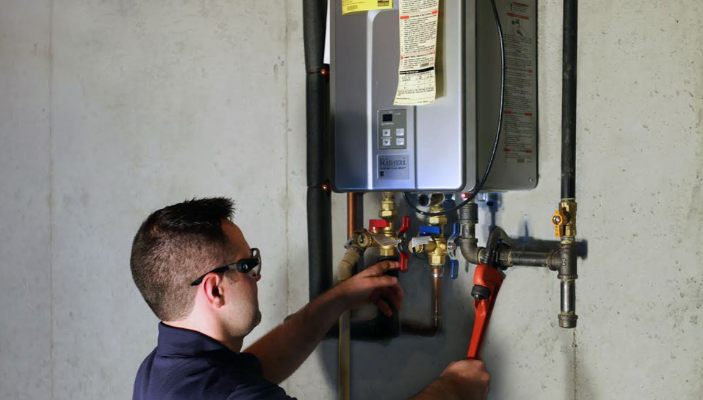Essential Maintenance Strategies for Your Home's Hot Water System
Essential Maintenance Strategies for Your Home's Hot Water System
Blog Article
Nearly everybody seems to have their personal idea with regards to How to Maintain a Hot Water Heater in a Few Simple Steps.

Hot water is important for day-to-day convenience, whether it's for a rejuvenating shower or cleaning recipes. To guarantee your hot water system runs efficiently and lasts much longer, routine maintenance is key. This article gives functional suggestions and insights on just how to preserve your home's warm water system to stay clear of interruptions and costly fixings.
Introduction
Maintaining your home's warm water system might appear overwhelming, however with a few straightforward steps, you can guarantee it operates efficiently for several years to come. This overview covers whatever from recognizing your hot water system to do it yourself maintenance pointers and recognizing when to hire specialist assistance.
Relevance of Preserving Your Warm Water System
Regular upkeep not only expands the lifespan of your warm water system but likewise guarantees it operates efficiently. Ignoring upkeep can result in lowered efficiency, higher power bills, and also premature failure of the system.
Indicators Your Hot Water System Requirements Maintenance
Recognizing when your hot water system needs focus can prevent major problems. Keep an eye out for signs such as inconsistent water temperature level, strange noises from the heating system, or rusty water.
Comprehending Your Warm Water System
Before diving into maintenance tasks, it's practical to understand the basic elements of your warm water system. Typically, this consists of the hot water heater itself, pipes, anode rods, and temperature controls.
Month-to-month Upkeep Tasks
Regular regular monthly checks can aid catch minor problems prior to they escalate.
Flushing the Hot Water Heater
Flushing your water heater eliminates debris build-up, boosting performance and prolonging its life.
Monitoring and Changing Anode Rods
Anode poles prevent corrosion inside the storage tank. Checking and changing them when broken is essential.
Checking and Changing Temperature Settings
Changing the temperature settings guarantees optimum efficiency and safety and security.
Do It Yourself Tips for Upkeep
You can execute numerous upkeep jobs on your own to maintain your warm water system in top condition.
Checking for Leaks
Routinely evaluate pipelines and connections for leaks, as these can lead to water damages and greater expenses.
Evaluating Pressure Relief Valves
Testing the stress safety valve ensures it functions correctly and prevents excessive stress build-up.
Protecting Pipes
Insulating warm water pipes reduces heat loss and can conserve power.
When to Call an Expert
While DIY upkeep is helpful, some problems require professional experience.
Facility Problems Calling For Specialist Help
Instances consist of major leaks, electric problems, or if your hot water heater is constantly underperforming.
Routine Specialist Maintenance Advantages
Specialist maintenance can consist of complete evaluations, tune-ups, and making certain conformity with safety criteria.
Verdict
Regular upkeep of your home's hot water system is crucial for performance, durability, and price financial savings. By following these tips and recognizing when to look for specialist help, you can make certain a trusted supply of hot water without unexpected disturbances.
How to Maintain an Instant Hot Water Heater
Before tinkering with your hot water heater, make sure that it’s not powered on. You also have to turn off the main circuit breaker and shut off the main gas line to prevent accidents. Also turn off the water valves connected to your unit to prevent water from flowing into and out of the appliance. 2. When you’re done, you have to detach the purge valves’ caps. These look like the letter “T†and are situated on either side of the water valves. Doing so will release any pressure that has accumulated inside the valves while at the same time avoid hot water from shooting out and burning your skin. 3. When the purge valves’ caps are removed, you have to connect your hosing lines to the valves. Your unit should have come with three hoses but if it didn’t, you can purchase these things from any hardware or home repair shops. You can also get them from retail stores that sell water heating systems. Read the user’s manual and follow it to complete this task properly. When the hosing lines are connected, open the purge port’s valves. 4. You should never use harsh chemical cleaners or solutions when cleaning your unit. Make use of white vinegar instead. It should be undiluted and you’ll probably use about 2 gallons. 5. Now flush your water heater. This task should probably take about 40 minutes. We can’t give you specific directions for this because the procedure is carried out depending on the type, model and brand of your heater. With that being said, refer to the user’s manual. 6. When you’re done draining the unit, you have to turn off the purge port valves again. Remove the hosing lines that you earlier installed on each of the water valves. Put the valve caps (purge port) back in their respective places and be very careful so as not to damage the rubber discs that are found inside these caps. 7. Now that everything’s back in place, check your user’s manual again to find out how to reactivate your water heating system. 8. Once it is working, turn one of your hot water faucets on just to let air pass through the heater’s water supply pipes. Leave the tap on until water flows smoothly out of it. https://www.orrplumbing.com/blog/2014/september/how-to-maintain-an-instant-hot-water-heater/

We hope you liked our part on Tips For Maintaining Your Hot Water Heater. Thanks so much for finding the time to read our piece. Enjoyed reading our write-up? Please share it. Let another person find it. Thanks so much for taking the time to read it.
Additional Information Report this page